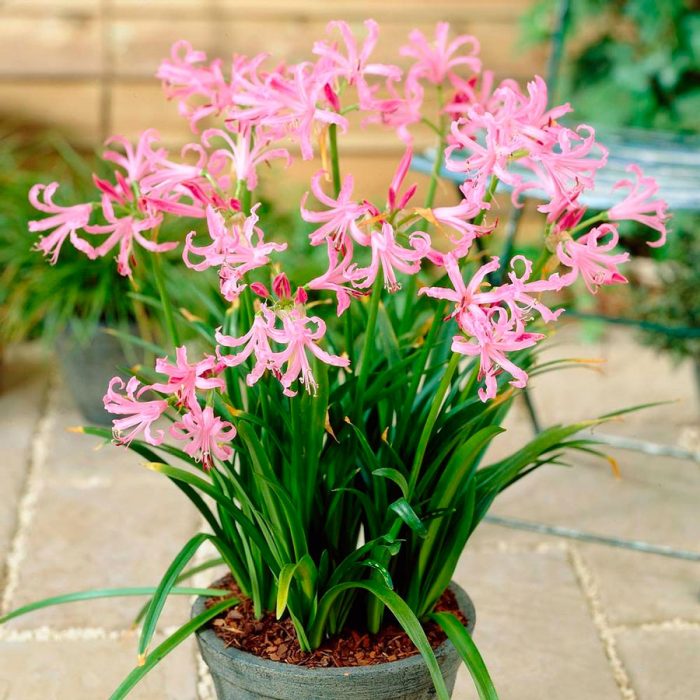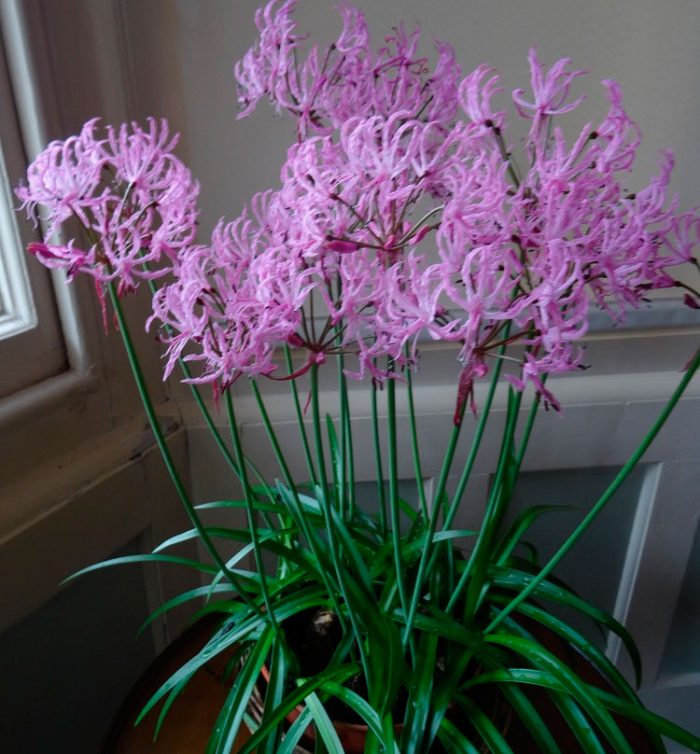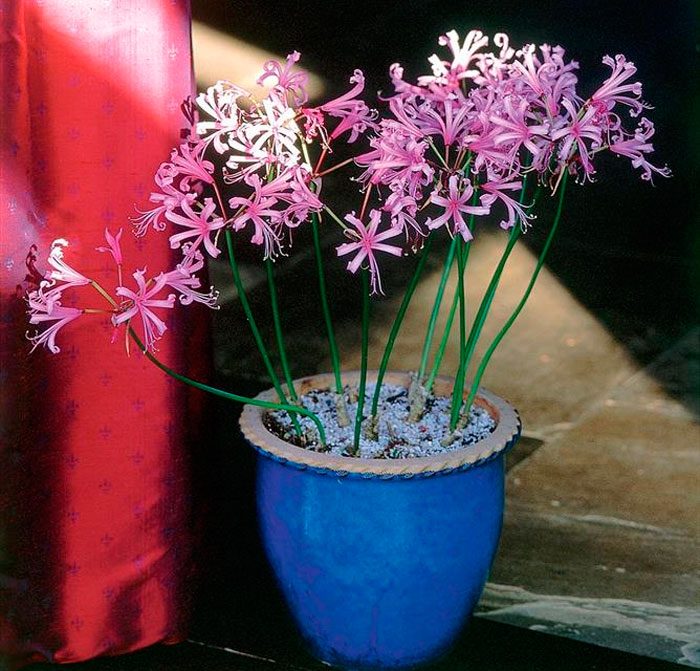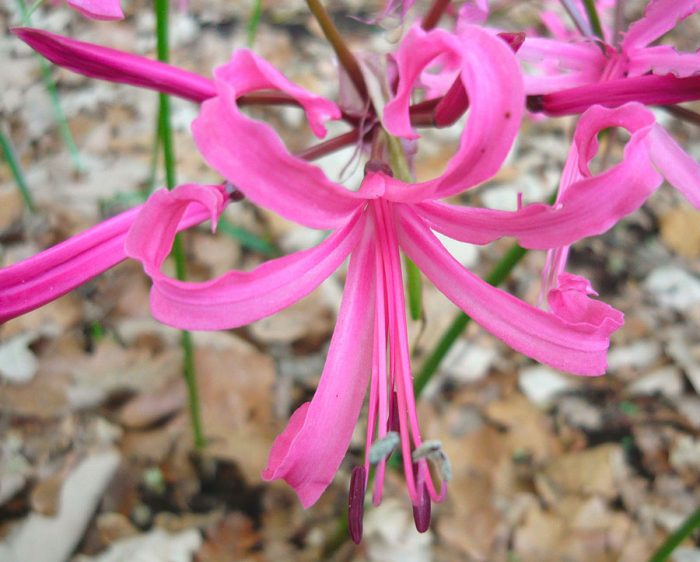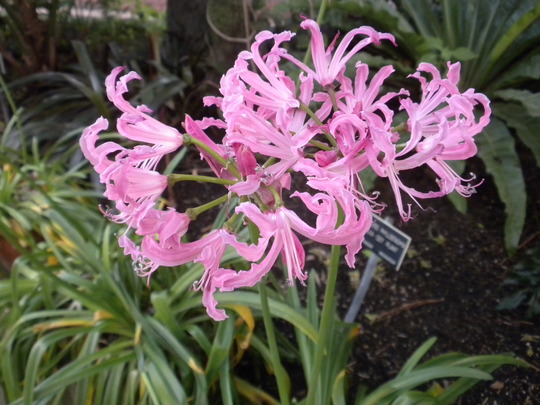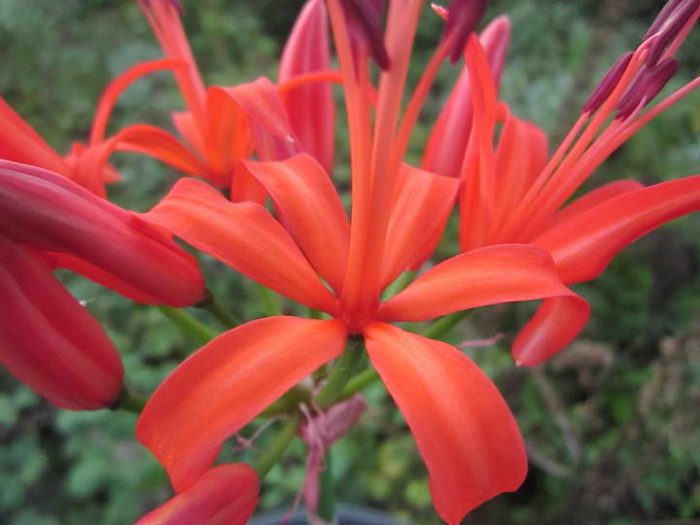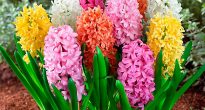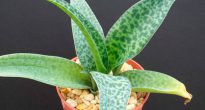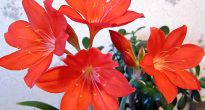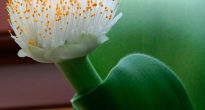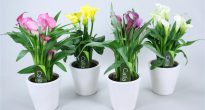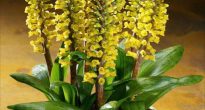The bulbous plant Nerine is a member of the Amaryllidaceae family. This genus unites about 30 different species. This bulbous ornamental perennial plant is found naturally in South Africa, and also in its tropical belts. In regions with a cool climate, such a culture is grown on terraces or indoors. And in areas with relatively warm climates, it is grown outdoors throughout the year. Such a plant blooms in the first half of the autumn period. Peduncle with inflorescences and foliage grow at the same time. The length of the peduncle is about 50 cm. The dark green leaf plates are narrow and long. Funnel-shaped flowers are collected in several pieces in umbrellas. The color of the flowers is white, pink, red or orange.
Content
Caring for nerine at home
Illumination
From the last autumn to the first spring weeks, nerina needs to provide bright lighting, but it should be diffused. The fact is that during this period, the bush has an intensive growth of foliage.
Temperature regime
During the summer, the bulbs of this plant must be stored in a warm (23 to 25 degrees) and dry place. After the bush has bloomed and before the first spring weeks, the plant should be placed in a cooler place (from 8 to 10 degrees), but if it is warm, then in the next season there may be no flowering.
How to water
When the plant fades, its watering should be gradually reduced, and by the onset of spring it should be reduced even more. Then the plant must be stopped altogether, and watering is resumed only with the germination of the bulbs.
Fertilizer
Nerine is fed with liquid fertilizers. During the flowering period, top dressing is carried out 1 time in 7 days, when the plant has faded and until the second half of spring it must be fed 1 time in 2 weeks. From May until the beginning of flowering, all feeding is stopped.
Transfer
The duration of the dormant period is from May to August. During this period, all feeding is stopped, and the plant is placed in a warm place (about 25 degrees). In the first days of August, you should start a new forcing of the flower. At the beginning of the awakening of the bulb, a bronze coating forms on its neck. After that, the onion should be planted in a fresh substrate, and it should also be systematically watered.A soil mixture consisting of old clay, sand and compost soil or humus (1: 1: 1) is best suited, and a little bone meal and sand should also be added to it. In 10 liters of the resulting substrate, you need to add a little chalk (to lower the acidity of the soil mixture), 25 grams of horn shavings and superphosphate, as well as 8 grams of potassium sulfate.
Landing
In 1 pot should be planted 1 or 2 onions. If you use an excessively bulky pot for planting, then the growth of the bulb will slow down because of this. Therefore, the pot should be no more than 13 centimeters across. When planting the bulb, its head is left not dug. If everything is done correctly, then after about 4 weeks, flower stalks and buds should appear. If rooting was not done according to the rules, then the buds will remain closed.
Seed propagation
Once the seeds are ripe, they should be sown immediately. Sowing is carried out in bowls filled with a substrate consisting of vermiculite and sand. Crops are harvested in a warm place (from 21 to 23 degrees). After about half a month, the first seedlings should appear, then they should be sown into separate pots filled with a special soil mixture (see above for the composition). The plants are removed to a cooler place (from 16 to 18 degrees), while they need to provide bright diffused lighting. For 3 consecutive years, young plants should be grown without a dormant period.
Virulence
This plant contains poison, so when the work with it is finished, be sure to wash your hands well with soap and water.
Diseases and pests
When the nerine bulbs are planted after a dormant period, they must be watered very carefully, otherwise they may rot.
This plant has a very high resistance to harmful insects, but aphids sometimes settle on it.
Main types
Nerine bowdenii
This species is native to South Africa. The length of the bulbs is about 50 millimeters, with most of them rising above the ground surface. The dry outer scales are glossy and brownish. Long, leafy sheaths form a false stem, which reaches a height of 50 mm. Linear leaf plates, tapering towards the top, are slightly grooved, their length is about 0.3 m, and their width is 25 mm. The surface of glossy leaves is completely veined. The length of the peduncle is about 0.45 m, it has an umbrella-shaped inflorescence. There is no foliage on the peduncle. On the inflorescence there is an inflorescence leaf, over time it turns pink. The inflorescence contains about 12 flowers. On the surface of the swirling pink tepals, there is a strip of darker color. This kind blooms in the middle of the autumn period.
Nerine flexuosa
This species is relatively rare. On long peduncles, inflorescences are located, consisting of flowers similar in shape to bells, wavy petals can be painted pink or white. This species blooms in autumn.
Nerine curvifolia
Linear lanceolate leaf plates reach their maximum length only after the plant has faded. The length of the peduncle is about 0.4 m. The umbrella-shaped inflorescences include about 12 flowers similar to lilies. The flowers have glossy red petals and the stamens are long.
Nerine sarniensis
At the top of the peduncle are red, orange or white flowers. Their petals are twisted and narrow.

